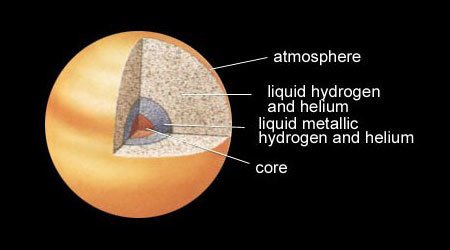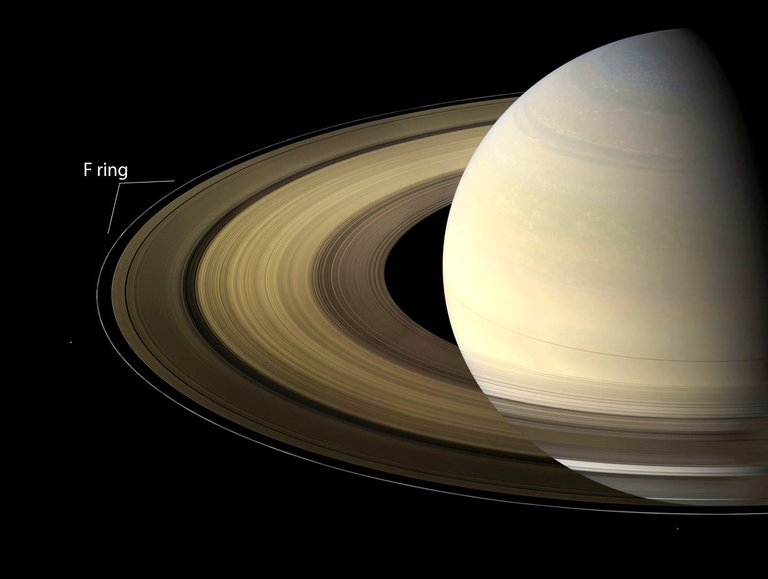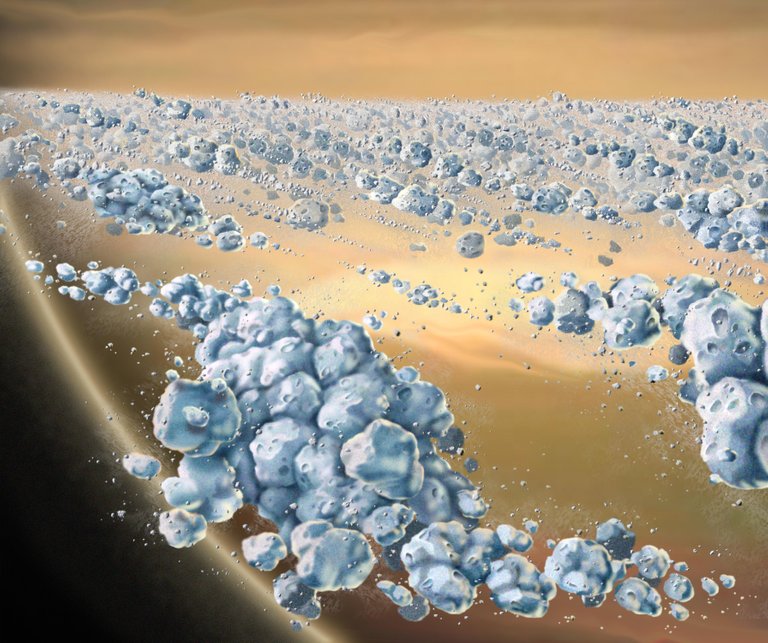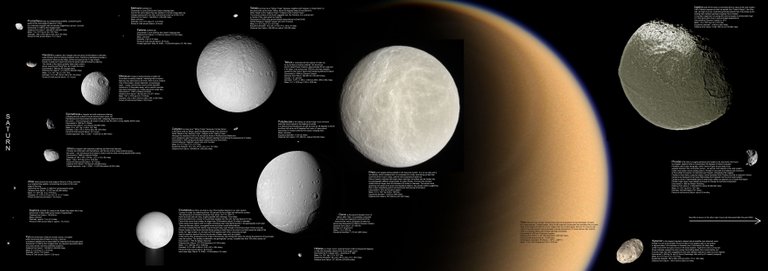Saturn, the planet that has rings | Cosmology | Science
The name Saturn comes from the Roman god of wealth and agriculture Saturn. Saturn is a fascinating object for scientists and the source of many scientific mysteries. Saturn is the sixth planet from the Sun and the second largest planet in the solar system which was born about 4.5 billion years ago. the first largest planet being Jupiter. It is a gas giant because it is almost completely made of gas. The radius of Saturn is about nine times that of Earth which is 58,232 km. Saturn's average density is less than Earth's average density, which is one-eighth. It is 95 times heavier than Earth because of the larger volume of this planet which is 8.23× 10^23 m^3. Mass of the planet Saturn is 5.683 × 10^26 kg .
Saturn has a dense core of metals such as iron and nickel, which are rocky elements. So iron nickel and other compounds such as silicon and oxygen compounds are hardened by intense pressure and heat. Saturn's core is surrounded by a layer of metallic hydrogen, The temperatures and pressures inside the saturn have converted the hydrogen to metal. And then it has a next layer of liquid hydrogen. Finally it has outer layer which made with gas.

Saturn's atmosphere has the presence of ammonia crystals in the surface. Because of this, Saturn's color is a pale yellow. Like our Earth, Saturn has a magnetic field. Currents flowing in metallic hydrogen are thought to be the source of Saturn's planetary magnetic field. Because of Saturn's larger size, its magnetic moment is 580 times greater than Earth's. The wind speed on Saturn will surprise you. The wind speed can reach up to 1,800 km/h which is very unusual.
The most famous feature of Saturn is the planet's clearly visible ring system. You may have seen this ring in images or videos. These rings of Saturn are mainly composed of ice particles. Other components of this ring are small amounts of rocky debris and dust.

From the image above you can understand how beautiful Saturn's attractive rings are. Because of this beautiful ring, Saturn grabs everyone's attention compared to other planets in the solar system.
In 1610, astronomer Galileo Galilei was the first to see Saturn through a telescope and at the same time saw a pair of objects on either side of Saturn. He thought of them as separate spheres and wrote that Saturn could be three-bodied. In 1659, Dutch astronomer Christian Huygens described the rings using a more powerful telescope than Galileo.
NASA scientists have discovered a new ring of huge size revolving around the giant planet of the solar system. They had to try for a long time to discover it. They say that there are more than 1000 rings made of ice and dust around Saturn. What people did not know for a long time. The newly discovered ring is so huge that it would fit a hundred million or even a billion Earths. Some rings are very thin and some are very thick.

The particles in the rings' components range in size from pebble-sized to cell-sized. Scientists speculate that the particles came from moon debris orbiting the planet. They think that comets and meteorites have broken up the moons. Due to Saturn's gravitational pull, these particles are orbiting Saturn in the form of rings.
Saturn has 82 moons, but 29 of them are considered to be the main moons due to their size. Titan Moon is the largest of them all. Titan is the second largest of our solar system's moons. Titan is about 148% larger in diameter than Earth's only moon, the Moon. It is also growing larger by collecting material from Saturn's rings.

Although Saturn is not suitable for life, many of its moons may have the potential to harbor life. Some moons like Enceladus and Titan, or the inner atmosphere of such moons, scientists are investigating the existence of life. In this case Titan is seen with more importance. Scientists believe that Titan has oceans that could harbor life because Earth's oceans are a source of vast amounts of life.
Saturn has the second shortest day in the solar system at 10.7 hours. Saturn makes one complete revolution around the Sun in about 10,756 Earth days. Its axis is tilted by 26.73 degrees relative to the Sun's orbit, which is why Saturn has seasons like Earth.
Saturn is covered in clouds of ammonia ice crystals that appear as faint streaks, jet streams, and storms. Winds in the upper atmosphere of Saturn's equator reach speeds of up to 500 meters per second, which is very strong. So powerful that it is the strongest hurricane on Earth with winds of 110 meters per second. Understand the difference in air currents between Earth and Saturn. Saturn's air pressure is extremely strong which we feel when diving deep underwater. This is so strong that it liquefies the gas.
Saturn's magnetic field is 578 times stronger than Earth's. Saturn, the rings and many moons lie entirely within Saturn's strong magnetosphere. Despite the speed of the wind, this region of Saturn is where the behavior of electrically charged particles is more influenced by Saturn's magnetic field than by the solar wind. Isn't that strange? Where we don't see any objects on Earth being directly affected by the magnetic field, Saturn's magnetic field is also fighting its wind.
Scientists say life could exist on Saturn's moon Titan, even though Saturn has a hostile climate for life. As Saturn is far away from the Sun compared to Earth, sunlight does not reach it very much. Titan, on the other hand, has a foggy atmosphere. How is life possible here? Scientists are trying to find life on Titan for a reason. Astrobiologists have found another possible driving force for life on Titan, which is acetylene. Scientists think that if life existed on Titan, it would react with acetylene to form hydrogen and absorb it from the atmosphere. They think there is enough acetylene to support life. So, scientists can theoretically say that there are conditions for life to exist on Titan, but in reality there is no such evidence so far. A future Titan mission will tell if life exists there
References
- NASA
- Wikipedia
- NASA
- https://starchild.gsfc.nasa.gov/docs/StarChild/solar_system_level1/saturn.html
- National Geographic
Thanks for reading
Best regards

Saturn is beautiful I would like to have a opportunity to see it using a telescope one day !
!1UP
Click this banner to join "The Cartel" discord server to know more.
It is good news that you have seen the planet Saturn by a telescope. Thank you for your support
You have received a 1UP from @gwajnberg!
@stem-curator, @vyb-curator, @pob-curator
And they will bring !PIZZA 🍕.
Learn more about our delegation service to earn daily rewards. Join the Cartel on Discord.
Thanks for your contribution to the STEMsocial community. Feel free to join us on discord to get to know the rest of us!
Please consider delegating to the @stemsocial account (85% of the curation rewards are returned).
Thanks for including @stemsocial as a beneficiary, which gives you stronger support.
Wow!
So much to know about a planet.
I can imagine what interesting facts the others have.